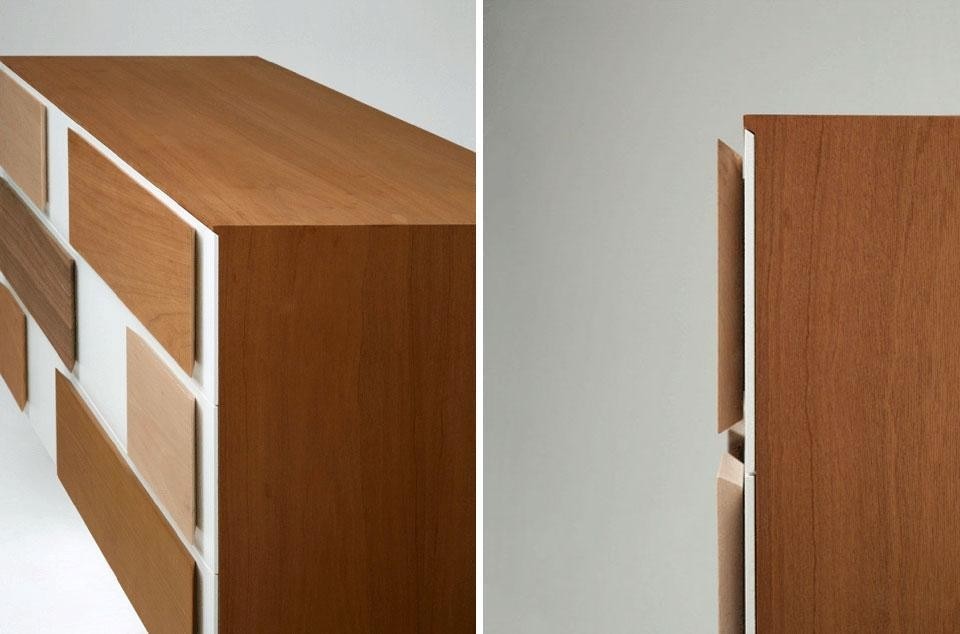Goethe
For those involved in design, works from the past contain the history that precedes them and the history that will come after them. It is the history that will come that illuminates the past in a process of continuous evolution. The works teach us that those who were involved in their making, like their very functions, survive their creators, and that the author's intentions lie, instead, in the past. They also show that the effect that the work has on us is not based only on the encounter with it but, borrowing Walter Benjamin's words, "in an encounter with the history which has allowed the work to come down to our own age." For Benjamin, history-even that of design, we might say, given the importance he assigned to surreal "goods"-is not the advent of the past that progresses in a present that will be overcome by an inevitably better future, but it is the subject of a "project" that does not lie in a void but that was shaped in a specific era, in a specific life, in a specific job. And yet, this project results in the simultaneous suspension and preservation of the work in a life of work, of an era in a life's work and of the course of history in that era. Only in this way is it possible to explore an era outside its "historical continuity"-as we said at the time-reified, and to raise the life out of its era and the work out of a life's work.
And so Molteni's new edition of some of Gio Ponti's furniture that will be presented at the Salone del Mobile in Milan is not a nostalgic interpretation of a golden past or the decadent recovery of that lost epic "of that Italy that could ... " These works are not historic works and are not reproductions overcome by time intended for contemplation in a museum (a "discussion" regarding reconstructions suitable for study and research is a different issue). These are revisited works: new visits to the work which elevate the work from that creation and the experience of a lifetime from that work; creating a process that, in the case of producing a piece of furniture, is a concrete act of the "material creation" of memory, reactivating a project's latent energy, re-introducing it into the only condition-the market-that, in the case of the design "commodity," validates it and allows it to exist as something other than a "replica" or an abstract "déjà vu."
In particular, the products presented here are furniture objects from Ponti's mature years. The architect took years to create, in their final form in his own house/manifesto in via Dezza, what he insistently emphasized in a series of "educational" pieces in Domus; illustrated by such expressions as "my conception of", or "I'm leaning more and more towards", they are ways of containing "everything concerning the necessity and use of the things" that accompany modern life. Exemplary models of the essence of Ponti's aesthetics (wall panels, wall organizers, "dashboard" backdrops, self-illuminating furniture) in which walls seem to be "hanging screens" and where depth is hinted at by means of tapered profiles that detach planes from substructure, or by using a profile that is rounded or bent at its edges so that the object's volume is decomposed into thin "sheets." To cite just one example, looking at the old photos of the house on Via Dezza, it is enough to mention that a bookcase is never used for books but for creating the setting for the display of art objects.
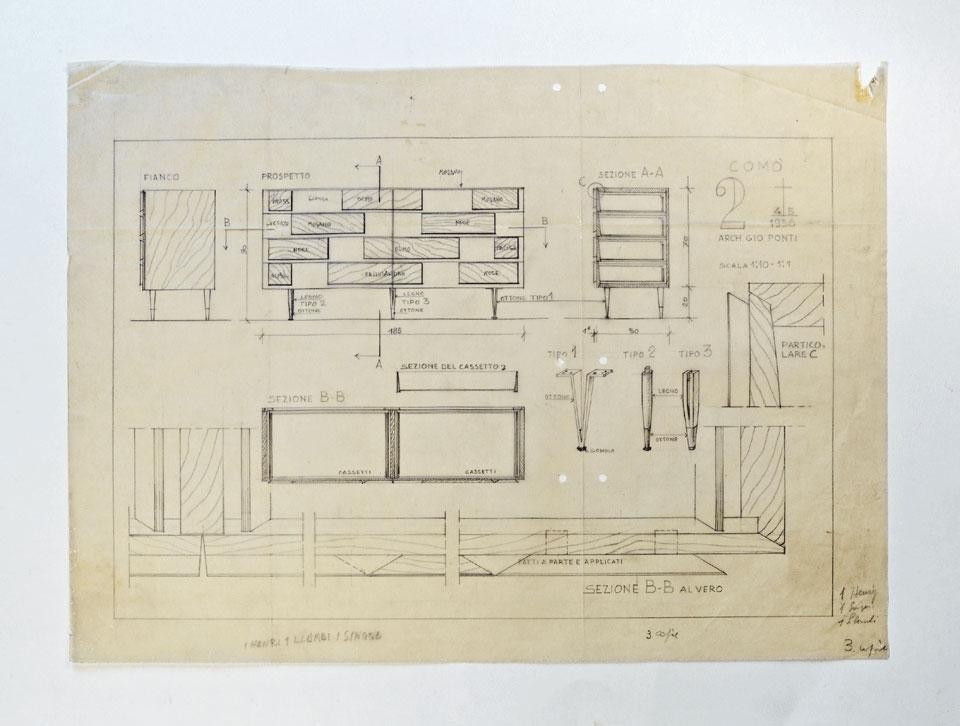
Retracing it all obviously concerns overcoming the figure that dominated the 20th century: that of the collector. If furniture and interiors are increasingly reproduced in museum contexts, this fact can no longer represent a singular nostalgic and traditionalist vision, but has become a phenomenon of expansion and accessibility that allows the true and ironic democratization of the "practical way of living surrounded by art." We asked Francesca Molteni, who oversaw the creation of the pieces presented, to confirm all of this.
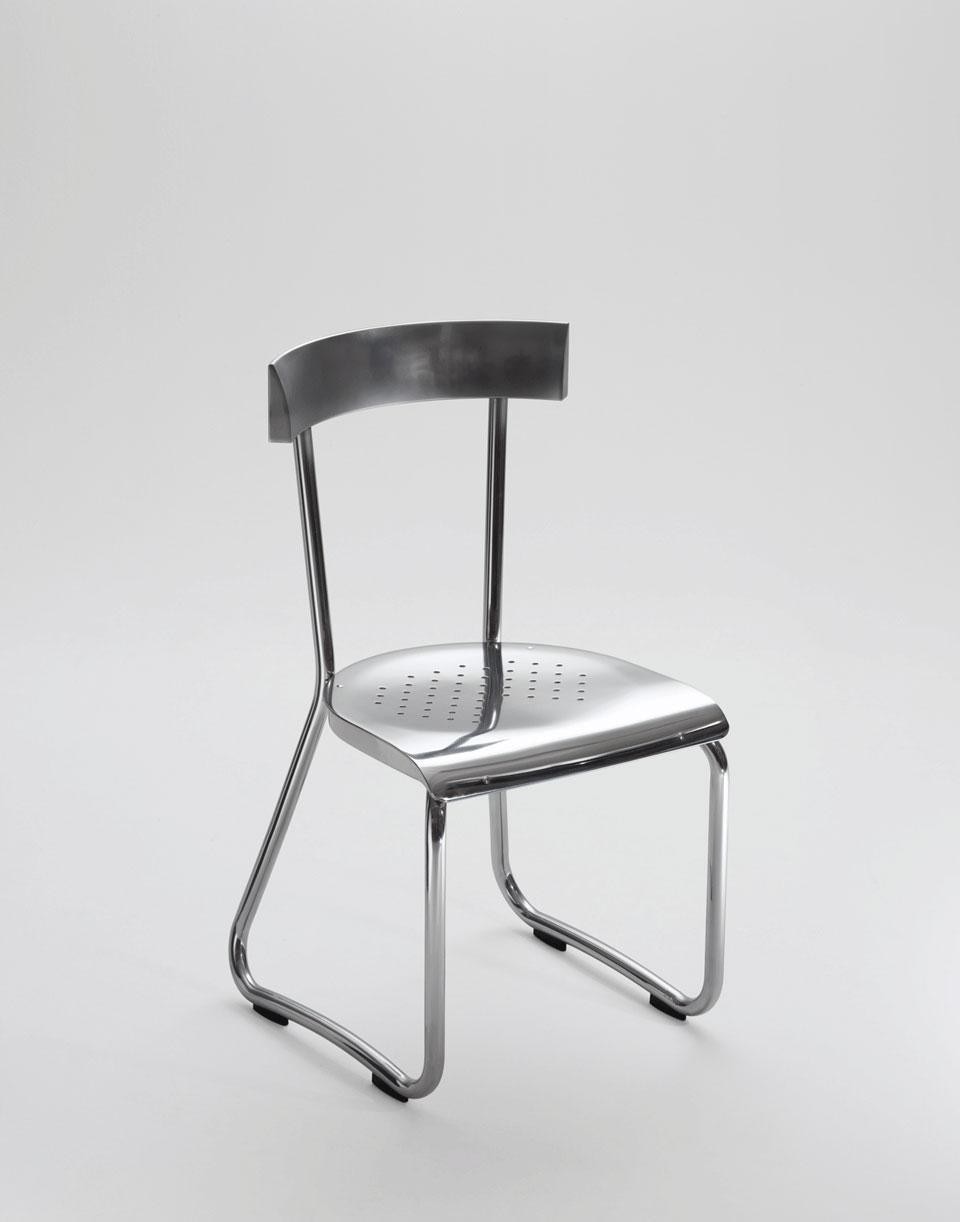
The idea came two years ago when I saw a bookcase that Ponti once had in his house in Via Dezza at Paolo Rosselli's house; Rosselli is one of the heirs of the Ponti archives. The bookcase dated from the 1950s. It was very beautiful, simple, linear in white-painted wood that seemed a bit faded. After asking the Ponti estate to approve the operation, a survey of existing products was undertaken to try to understand what was still in production.
Considering that Molteni had never worked with Ponti and that he is gone and that all the re-editions had to be based on drawings, the recollections of his heirs, and on the original pieces if they could be found. Among the many possibilities, a first selection was made of thirty pieces whose history and context could be reconstructed. At that point we asked the architect Pierluigi Cerri to make a choice based both on what could still make sense to repeat today as well as on Molteni's DNA. After we began the archival research, the material we found surprised us for its ability to reconstruct Ponti's creative process so exactly even after so many years. While he drew a great deal, Ponti never did anything just for the sake of doing something but always worked as a result of a concrete and established professional commitment. It was in this kind of context that we identified the first project: the aluminum chair from the early 1930s for the first Montecatini headquarters.
Even if a Japanese catalogue published in 1936 collected the most beautiful seating of the time, the chair was never produced and was only made for 1,500 Montecatini employees. So we made a first prototype and everyone liked it immediately.
Among the many possibilities, a first selection was made of thirty pieces whose history and context could be reconstructed
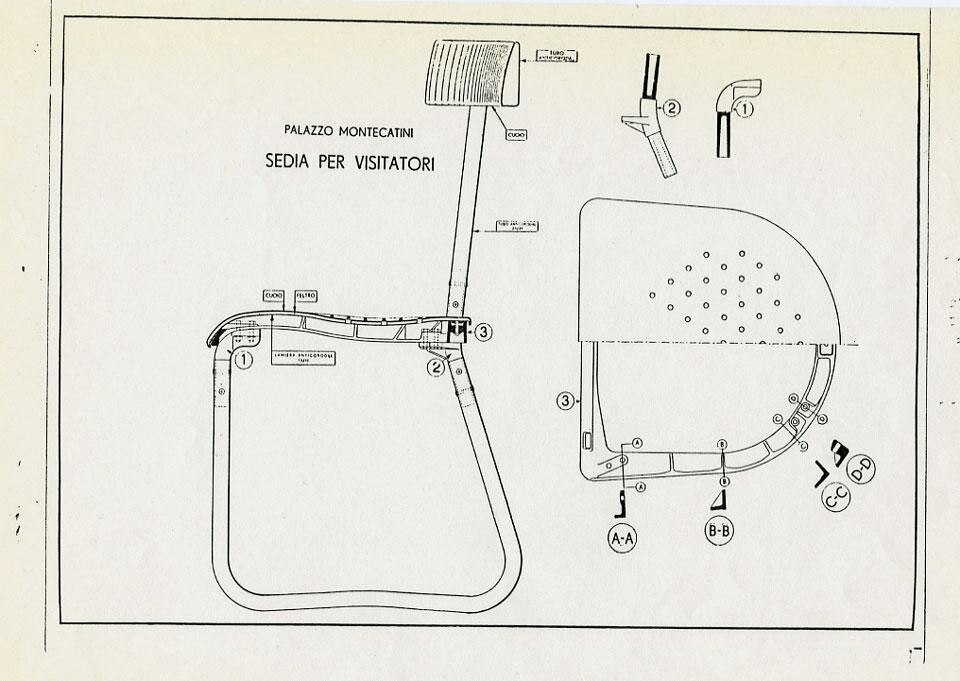
Once the chair prototype was done, we stopped and began to ask advice in order to understand what we had to do to produce high quality products with affordable prices. The idea was not to make a limited number of pieces for collectors but to bring Ponti's furniture into today's homes. The same process used for the chair was then used, in a much more complicated way, for the bookcase and wood dresser from his apartment in via Dezza. He redesigned this dresser at different points in his life for his own home, for the Swedish company Nordiska and the American company Singer & Sons; Ponti designed furniture for two American companies in the 1950s-Singer & Sons and Altamira. And these are produced in large quantities. We do not know exactly where they are today, but the fact that many still exist is confirmed in expensive auction and antiques catalogues.
In parallel, we searched the documentation at the Centro Studi e Archivio della Comunicazione in Parma, the archive entrusted by Ponti's estate with the storage of the designer's drawings; they made it possible to reconstruct these projects accurately covering every aspect from freehand drawings made directly by Ponti, to technical drawings indicating the choice of woods to solutions for the foot of the dresser to the joints of the drawers-demonstrating incredible precision and the ability to document Ponti's work. Because the point was-and this is the big question regarding re-editions-should we redo them the way they were made at the time or the way we would produce them today?
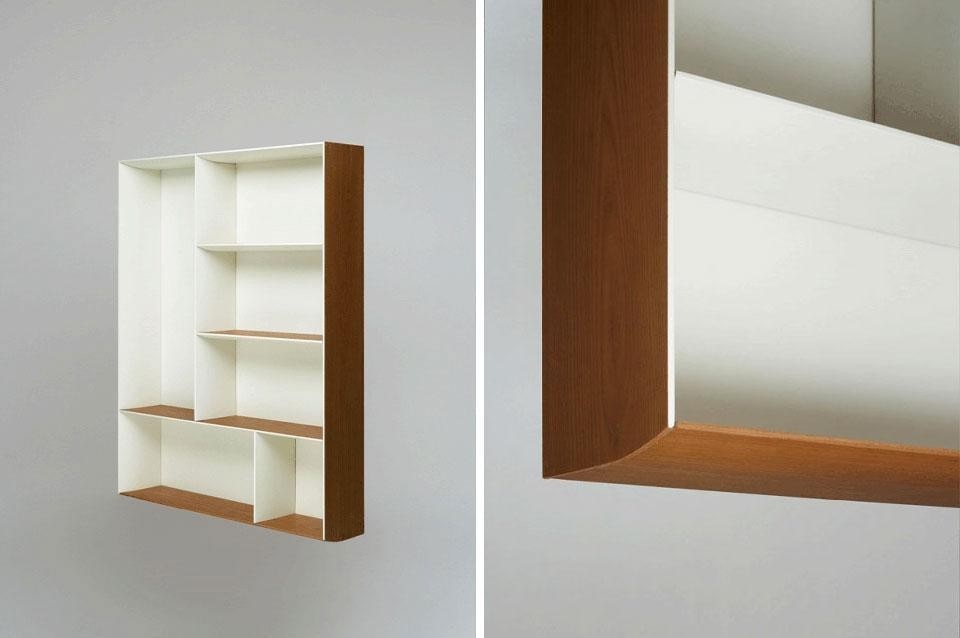
In the end, we tried to keep the two together-maximum fidelity to the original and so to the idea; especially to the proportions which are very important in this furniture; they are very simple, but if you don't get the distance between the base and the foot of the dresser right, you can lose their magic. The drawer handle, for example, must have a certain thickness; if it doesn't, it is no longer a handle and becomes something else. Very accurate fidelity to the original must be pursued. On the other hand however, we had to try to reinterpret a project from the fifties with today's production techniques. Again in this case, we gave the excellent prototype developers the assignment of making the first pieces-with the idea of industrializing production. So it's a project on the borderline between industry and craft but with the idea that the final price should still be accessible. Of course, this meant delving deeper into Ponti's world, getting to know his heirs and being told stories or anecdotes about Giordano Chiesa, his prototype craftsman.
At the time, companies produced in large quantities. Today the process has not changed since the 1950s. What has changed are the larger industrial dimensions.
We relied on the advice of Unifor, another Molteni company. The first prototypes were too heavy; we weren't convinced. But more recent ones have been produced with respect and attention to the cuts and joints that can limit the weight of such products as the "wall hung bookcase" which must be assembled prior to delivery without creating too many structural problems with the walls.
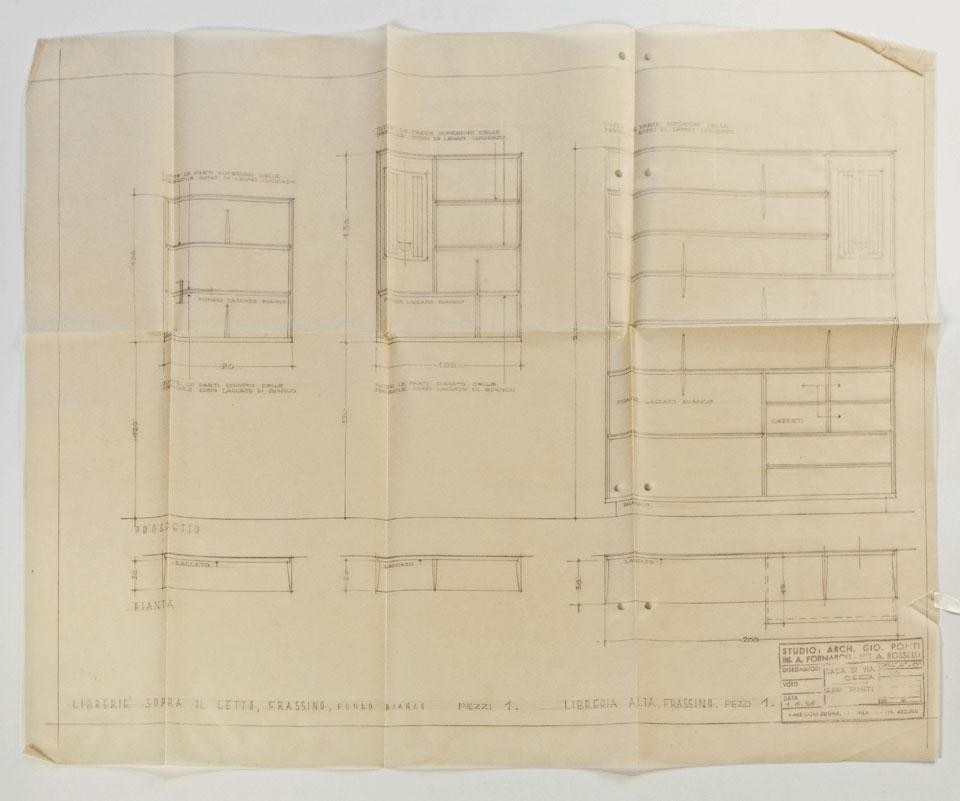
The bookcase will be built in two sizes: the larger one reaches the ground and the other is hung from the wall. Both bookcases conceived by Ponti for the house in Via Dezza had variations. One was lit inside with a lamp that functions as a frame rather than a mere light fixture. In production, we will try to maintain this detail in the taller one. The bookcases are characterized by airplane wing shelves. Underneath is some reinforcement-but it's all a game of forms, weights and woods-which is generally perceived as a thin line. With the CASC archivists, we found all the drawings of the wood finishes in elm, ash, walnut. These were especially important for the dresser, made in two sizes, in which the handles all have the same nuances and uniformity but with different veins of the same wood.
We identified several other types of dressers that are just as beautiful, but we put them aside for the moment. If these products do well, perhaps they can be produced. The other pieces that we decided to continue working with are the chair he had in via Dezza made in different versions for several producers, a cowhide rug in different colors which is very ironic and whose name refers to a Fellini film of the time, and a table, first realized in briar, then in brass, then in aluminum, like a neoplastic cross between a colored grid and a glass shelf. All the pieces are coherent with Ponti's vision-tapered legs, lightness of the plane/suface/curve and polychromy.
Following the relationship with the world of architecture and not just with design-which is part of Molteni's history. Typically we begin with architects who come to Molteni to make a certain product that is usually tied to another commission that includes some interior design. This approach does not arise, therefore, only from the desire to have a product signed by Nouvel, or Foster, but to realize an important creation made together with them which later ends up as a product. This is only ideally possible with Ponti, because he no longer exists and so there can be no direct discussion. It falls within the idea of maintaining a link with an Italian story like Ponti's; Molteni is a company with very local roots. Then there is the work with the craftsmen and the desire to find the same working method. Ponti worked the way companies work today. It's a bit like saying, "I have a commission for 1500 pieces for Montecatini. I will study a chair that will then go into production. I study an object not because I like it, but because it is functional to a specific project and then I can see how to develop it into something else. How to transform it from a project for a small series to one for every home." With a large project you have the economic resources to invest in research. This will let you understand more about furnishings like, for example, Ponti's and put this work to the service of the general public. That's what we did in the case of Jean Nouvel's table, Less. The table was created because Nouvel was commissioned to design the Cartier Foundation. He went to Unifor and then to Molteni for the interiors. That is, he went to a well-known company and once he understood how to make a nice table of that kind, he decided to put it into production in large numbers for everyone else. Also because, to cover the costs of research and the mold, a certain quantity must be sold and the initiative is based on a serious economic plan.
Along with this project, we are creating a different collection with Ron Gilad. This is the idea of having a Ponti collection. It is different from having a single signed product-a successful piece that is produced because it continues to sell. It seems to me that a company like Molteni must look in the mirror and ask itself who Rossi, Meda, Afra and Tobia Scarpa, Mangiarotti really were; to understand the links with the players in the architecture world who are not exactly designers. Gio Ponti lies within the genre of the historic Italian designer in the most noble sense of the term. On the other hand, with Ron Gilad, it's a total gamble on originality that you enjoy because you have a new relationship with the designer. I don't think it's a problem of borrowing from the past because we don't know what to do today. We try to keep something alive that allowed us to get this far with the new and even to gamble on the new. And also because it is something that few companies would risk doing. If we don't do it, many others would not do it or they would do it very poorly. The exhibition project; these are pieces that have to be sold and if they don't sell, you've made a big mistake. It's not a game and there's nothing nostalgic about it.
Vivere alla Ponti: le case abitate da Gio Ponti. Esperimenti di vita domestica e architetture per l'abitare e il lavoro
17-22 April h 10am-8pm
23 April-4 May h 10am-1pm 3pm-6pm
Ordine degli Architetti di Milano
Via Solferino 17/19, Milan


